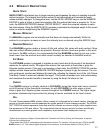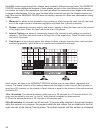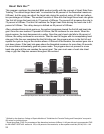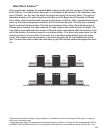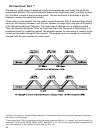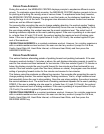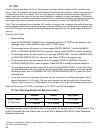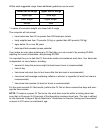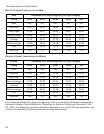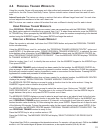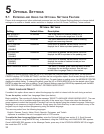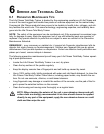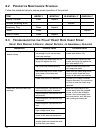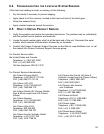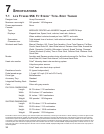
7 S
PECIFICATIONS
7.1 LIFE FITNESS 95XI FIT STRIDE
TM
TOTAL BODY TRAINER
Designed use: Heavy/Commercial
Maximum user weight: 350 pounds / 160 kilograms
Power requirements: None.
Console:
Type: MESSAGE CENTER with NUMERIC keypad and ARROW keys
Displays: Elapsed time, Speed, level, calories, heart rate, distance.
When enabled: calories burned per hour, METS, and watts
Summaries: Total elapsed time of workout, total calories burned, total distance
Character size: 0.54 inches
Workouts and Goals: Manual, Random, Hill, Cross-Train Aerobics, Cross-Train Reverse, Fat Burn,
Cardio, Heart Rate Hill, Heart Rate Interval, Extreme Heart Rate, Around the
World, Cascades, Foothills, Kilimanjaro, Interval, Speed Training, Personal
Trainer Workouts (6 slots), Time in Zone Goal, Calories Goal, Distance Goal,
Quick Start
Modes: Aerobics and Reverse modes during all workouts except for Fat Burn, Cardio,
Heart Rate Hill, Heart Rate Interval, or Extreme Heart Rate
Heart rate monitor: Polar
®
telemetry heart rate monitoring system
Lifepulse system sensors
Polar
®
heart rate chest strap: optional
Resistance Levels: 25 (speed independent)
Pedal speed range: 1.5 mph-14.3 mph (2.4 km/h-23.0 km/h)
Drive type: Belt/alternator
Accessory Tray: Standard
Integrated Reading Rack: Standard
Color: Silver with gray accents
PHYSICAL DIMENSIONS:
Length: 84.75 inches / 215 centimeters
Width: 26.5 inches / 67 centimeters
Height: 64 inches / 162.5 centimeters
Weight: 286 pounds / 130 kilograms
SHIPPING DIMENSIONS:
Length: 85.75 inches / 217.8 centimeters
Width: 29.25 inches / 74.3 centimeters
Height: 50.75 inches / 128.9 centimeters
Weight: 390 pounds / 176.9 kilograms
36
For EN 957-9 class Aaccuracy testing, input mechanical power was measured by connecting a cross-trainer to a fixture consisting of a motor and gear box with
an attached torque transducer, amplifier, and readout display. Testing was done by removing the pedal lever from one side of the cross trainer and connecting
the test fixture in place of the pedal lever at the crank axis. Torque measurements were taken with and without the pedal lever installed on the other side of the
cross-trainer in order to determine the level of measured torque required to compensate for the missing pedal lever. From measured torque and speed, the input
mechanical power and variance from displayed power were calculated. At level 12 and a constant 65 RPM, displayed wattage was 133 watts, with a 8.71% vari-
ance from input power on the test equipment. At level 12 and a constant 75 RPM, displayed wattage was 153 watts, with a 6.16% variance from input power on
the test equipment.



